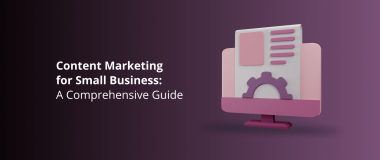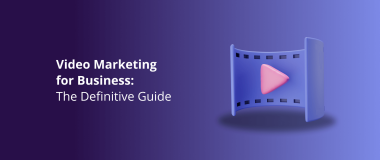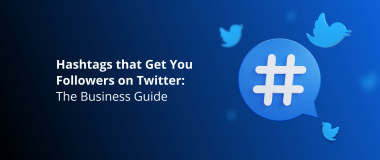Psychology is a universal instrument for understanding people: their behavior, habits, what calls them to action, what repels them, and so on.
Obtaining good marketing psychology skills is key for running a successful campaign, promoting your products, and deciding what type of promotions to run, to name a few.
The truth is that psychology is essential to your success. So, today we are going to review some core principles and marketing psychology examples of how to guide the behavior of consumers.
11 Essential Marketing Psychology Principles
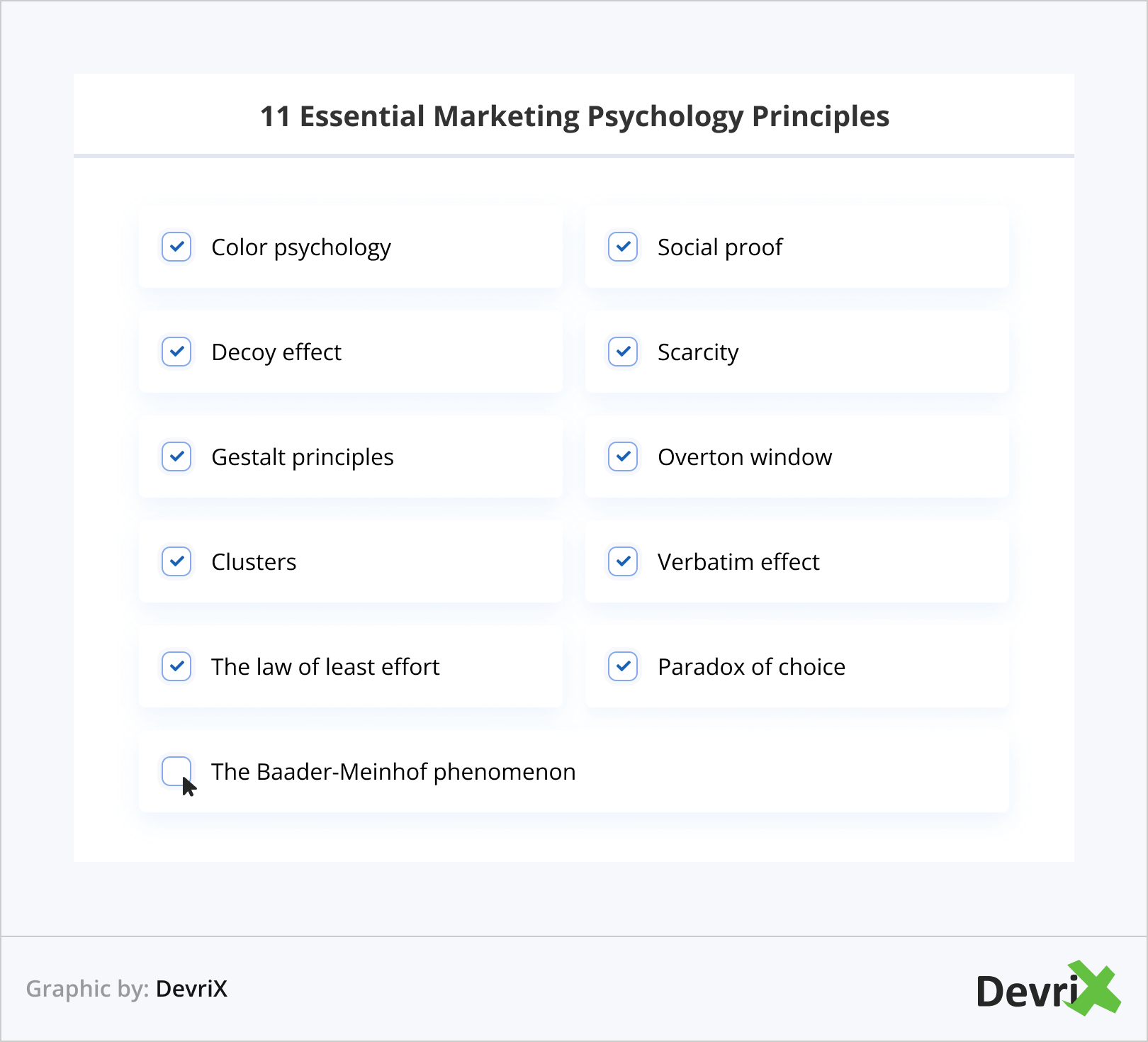
- Color psychology
- Social proof
- Decoy effect
- Scarcity
- The Baader-Meinhof phenomenon
- Gestalt principles
- Overton window
- Clusters
- Verbatim effect
- The law of least effort
- Paradox of choice
1. Color Psychology
Your choice of colors matters. Every color and shade has its own, subconscious, effect on the human mind. For example, red attracts the most attention and provokes strong emotions like passion, anger, and love.
Blue, on the other hand, is associated with calmness and reliability, and yellow is used to convey a message of happiness, optimism, and spontaneity. Color in marketing psychology matters, without a doubt.
Example: Cola-Cola have been using red in their branding since the 19th century. Back then, the use of color was rather coincidental, or at least, not connected to the principles of color psychology, however, over the years, it has proven to be successful. The bright red color of Coca-Cola evokes feelings of excitement, passion, and energy.
Would Coca-Cola have the same success if they had chosen, let’s say, green? No one can say for sure, but it’s certainly true that they would have definitely been a different type of brand.
2. Social Proof
Do you read reviews before you buy something? If the answer is yes, then you’re like 9/10 people that prefer reading reviews online before making a purchase. That’s why having online reviews is essential to your success. In fact, it’s better to have negative reviews than no reviews, at all.
Social proof is a psychological effect that has developed throughout the years as a way of self-preservation. Think about it: when someone ate a plant and then died or suffered from health issues, it was a sign for others to be careful.
The same thing applies to products and services. When you see that people before you are satisfied with a product or service, chances are, you’ll be more likely to purchase yourself, and vice versa.
Example: Companies regularly fill their websites with testimonials, user reviews, and awards, and recognitions they’ve earned. The more proof they include that their business is authoritative, trustworthy, and liked by people, the higher their chances to convince potential customers to spend their money on the companies products or services.
3. Decoy Effect
Every buying decision is entirely based on the preferences of the user, right? Well, not exactly. The decoy effect is an ingenious tactic that’s been proven to work. You all know how pricing models typically include three or four subscription options.
What if I tell you that one of these options is almost always used as a decoy to make you choose the more expensive one?
Here’s the deal.
This decoy effect requires multiple options to work, usually three. The first one is the most basic, and cheapest one. You also have a premium, most expensive option, and finally, there’s the one in between in terms of both pricing, and features.
However, when you look at the three options, your brain sees that the most expensive one is actually the most beneficial, given the extra functionalities it offers, and the slight increase in pricing compared to the second one (middle option).
What happens, if you remove the middle option? The user has to choose between the cheapest, most basic package, and the premium, most expensive option. In most cases, users prefer the cheaper alternative.
Example: A small-sized coffee is $3.20, a medium one – $4.50, and a large coffee costs $4.75. The elementary math shows that the large coffee is most cost-effective, and most users are immediately drawn to that conclusion.
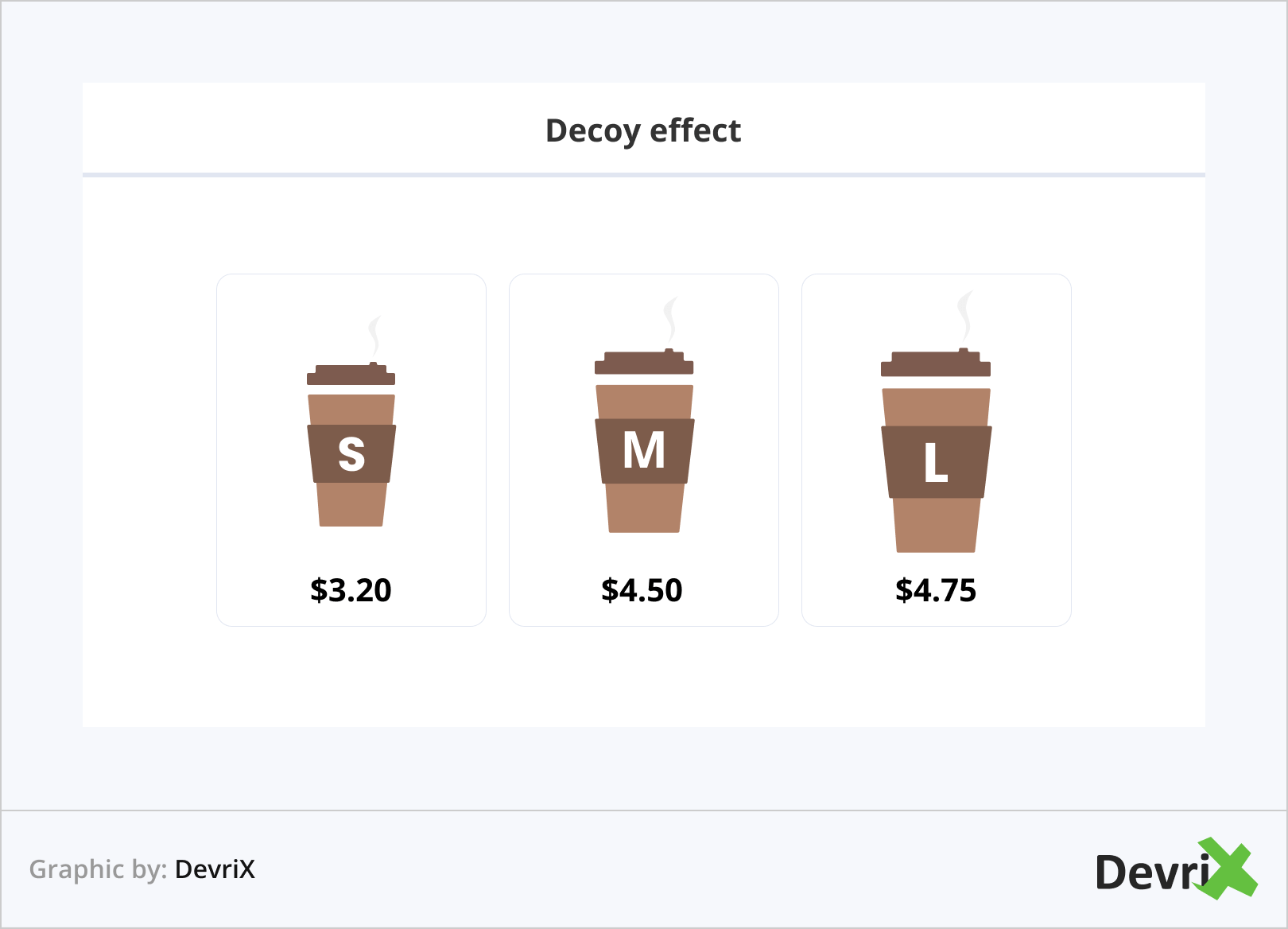
But ask yourself: were you just manipulated into buying a large coffee, and spending $1.55 more, when all you needed was a small coffee?
4. Scarcity
Read this section quickly, because it will disappear in 7 minutes! Just joking, but that’s how the principle of scarcity works. You see, the more rare a product, service, or opportunity is, the more valuable it becomes.
When you know there are 100 pairs of shoes at a regular price, there’s no hurry to buy. On the other hand, when you know that there are 10 pairs of shoes left at a 30% discount price, you need to be quick to purchase.
Truth be told, more often than not, companies create fake scarcity, in an attempt to sell more, and clear their shelves from certain products.
For instance, you’ve been looking at the same smart TV models for months, and now, all of a sudden, they are telling you there’s only a few left. This is when your subconscious starts to poke at you, and you go on to purchase the smart TV… only to see that a few months later, it’s back in-stock.
Example: Advertising on popular websites is great for the online exposure of your business. Placing your ad on websites like Yahoo, AOL, and MSN will result in millions of views. It’s no surprise that such websites often claim their “advertising space” is limited, and sold out months in advance.
In reality, there’s more than enough space for ads, but why not create scarcity and jack up prices?
5. The Baader-Meinhof Phenomenon
Has it ever happened to you that you see a new product for the first time, and following that, you have the feeling that, all of a sudden, that product is everywhere? You see it on TV, and in online ads, all of your friends appear to have it, and you even see it in the supermarket.
That’s the Baader-Meinhof phenomenon, also known as, frequency illusion. It applies not only to marketing psychology, but generally to situations when you learn something new, like hearing a new song, or learning about a new fashion trend.
It’s a curious phenomenon, because you get the feeling that everything is targeting you, specifically. In reality, the explanation is that your selective attention gets activated, and you start unconsciously noticing that new thing everywhere.
Also, due to confirmation bias, you reassure yourself that something is omnipresent, because you see, and notice it everywhere you can think of, all while feeling that the same thing was not popular before you started acknowledging it.
Example: An influential person you like (sportsman, TV personality, actor, etc.) is promoting a soft drink brand. Of course, you won’t immediately run to the store and buy that drink, but the next time you visit the supermarket, and you see that brand, you will remember the advertisement.
On top of that, if meanwhile, you see friends posting photos of that drink, or even notice an empty bottle of it on the streets, you will start feeling that “frequency illusion”, and you’re almost guaranteed to buy that brand.
The ultimate goal of marketing psychology practices using this phenomenon is to place an element deep inside that will be activated sooner or later.
6. Gestalt Principles
The Gestalt principle is the way our minds process different visual elements, as a part of a whole. So, when we’re looking at a website, our brains don’t see the elements like buttons, menus, images, etc., separately. Instead, we instinctively perceive them as a single object: website design.
Here are the 10 main Gestalt principles:
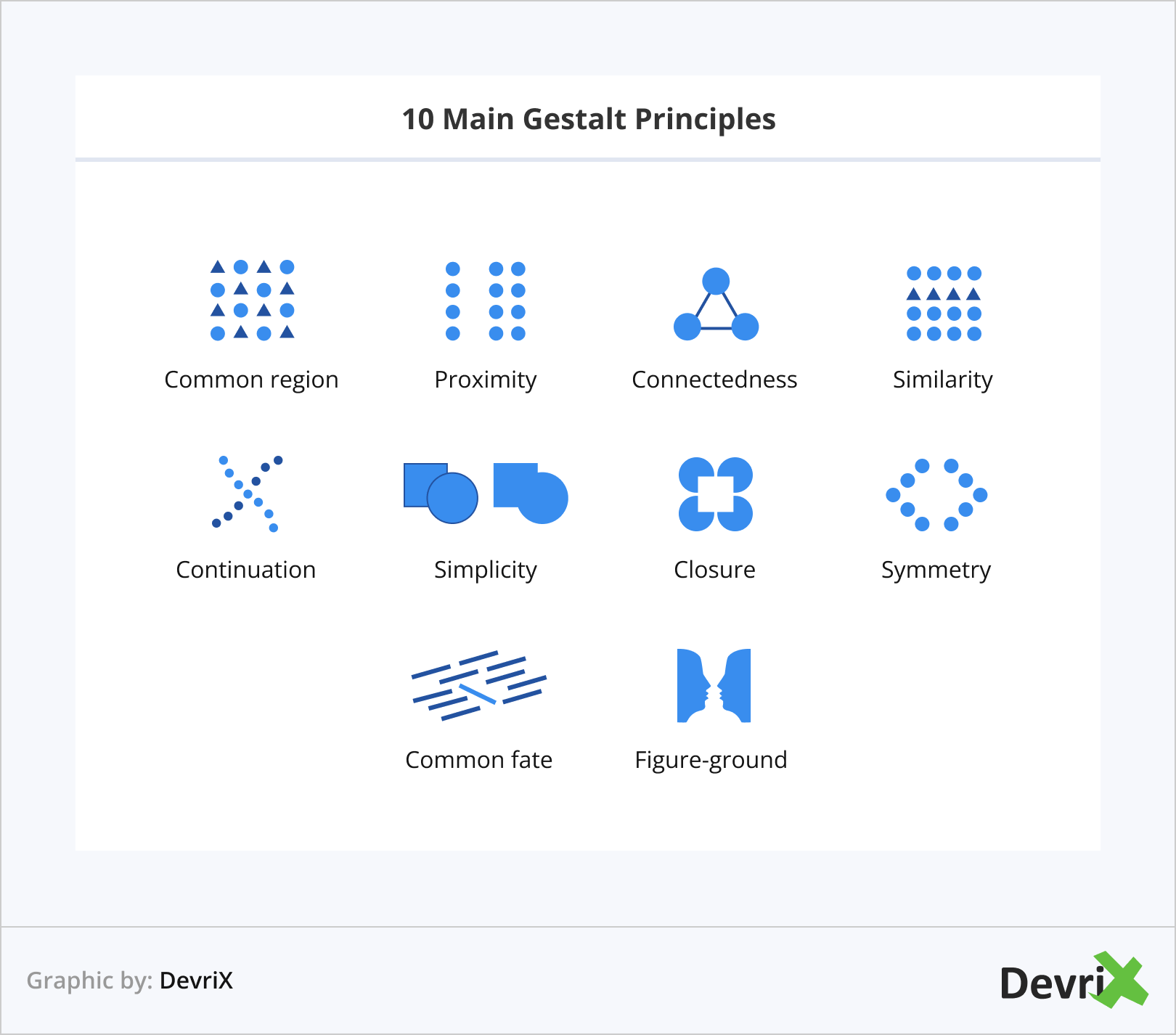
- Similarity
- Closure
- Proximity
- Continuation
- Figure-ground
- Simplicity
- Symmetry
- Common fate
- Common region
- Connectedness
Example: These principles are vital in all aspects of design – logos, ads, images, website layout, etc. If you fail to implement these principles, users will subconsciously feel like your design is missing something.
Nature abhors a vacuum, and the same goes for the human mind, thus your mind will always try to fill in details that are not there.
7. Overton Window
How would you react to a marketing campaign advertising about how fast food is great for weight loss, or communicating with the afterlife? That would be bizarre and would probably turn potential customers away. As shocking as it may sound, such topics could someday be considered by society as sensible and even popular.
The concept of the Overton Window is that there is a “window” of ideas that are acceptable, but that window changes over time. If you take an unthinkable, and radical idea and gradually start promoting it across the media, and with the help of other modern-day mediums, like social media, and influencers, that idea will eventually become acceptable.
The Overton Window is mainly utilized in politics, and marketing. We live in a time when the “window of ideas” is changing. Nowadays, it’s completely acceptable to openly discuss gay marriages, gender-affirming surgeries, and the rights of different ethnicities and races.
These are all topics that were deemed “unthinkable” to openly discuss just some 20-30 years ago.
Example: Marketing has to take social considerations into account. You can’t just run a campaign, or even create a social media or blog post using a radical idea that would seem totally unacceptable to society.
Or can you? In theory, you can, using the Overton Window effect. Still, it would take some time and clever planning to execute it properly. After all, there are some businesses that work in edgy niches, and sometimes they need to shock the world, before the world is ready to eventually accept them.
8. Clusters
Short-term memory is limited. In fact, people can only remember up to seven pieces of information at a time, according to Miller’s Law.
In order to deal with this, most marketers, and people, in general, prefer to place information in clusters. That’s why, when you visit Netflix, for instance, movies and series are group by category based on genre. Another example is when you have a shopping list: grouping items by category makes them easier to remember, compared to having them in random order.
In content creation, creating clusters is also a useful tactic. It’s simply easier for readers to remember the topic, and it’s subtopics, when they’re grouped in a logical, and well-structured manner. Additionally, clustering is used for customer segmentation.
Example: You collect information about your customers, and group them in categories. For instance, if you’re dealing with retail marketing, you may consider things like: small families that spend little, small families that spend a lot, big families that spend little, etc. This helps marketers understand and target users in a more personalized, and effective way.
9. Verbatim Effect
User attention span is at an all-time low, so marketers and content creators need to adjust, in order to find ways to stand out. This is where the verbatim effect comes into play. In short, people remember the general meaning of a text or message, rather than the details.
For instance, when someone reads a blog post about “WordPress Website Development”, they are more likely to remember the essential information, like picking a domain name, choosing web hosting, and adding plugins. Details, like the fact that the Akismet plugin comes pre-installed on every WordPress website, are more likely to be forgotten.
The other aspect marketers need to take into account is that people, generally, do not read the entire content of a web page, and typically stay on a page for around 15 seconds.
Thus, it’s of the utmost importance to write compelling headlines, and structure your content in a way that will grab the attention, and let readers instantly know which are the main talking points of your article.
Example: Put as much valuable information in your headline as possible, and try to make it catchy and memorable. A headline like “The 10 Best Ways to Get Rich Without Working a 9-to-5” is much more effective than “How to Get Rich Quickly”.
The first headline provides specific information, and the reader already knows what to expect, while the second one is vague, and doesn’t provide much additional value. Also, to be honest, the second headline sounds a bit like a scam.
10. The Law of Least Effort
The law of least effort comes from the fact that people typically want to do things efficiently, with the least amount of effort possible. This means, you should always make every effort to simplify processes for your customers, or you risk losing them.
If a visitor of your website cannot find a convenient and easy way to contact you, they’ll most likely leave your page, instead of investing minutes of their time looking for the information they need.
Again, people prefer the easy path, so every difficulty you set, willingly or not, increases the chances of users going to your competitors.
Example: You have an eCommerce website, and a first-time visitor is looking to purchase from you. However, they cannot find a way to navigate through your site, select the product they like, add it to their cart, and finish the process. They will look around for 10-15 seconds, and they will leave your website, finding the same product somewhere else, where they can easily go through the entire process.
11. Paradox of Choice
The more to choose from, the merrier, if we were to paraphrase Winnie the Pooh. Well, that’s not always the case. Actually, sometimes, having to pick from 10 options, in comparison to 3, makes it a lot harder.
Your mind gets overloaded, you need more time for decision-making, and this can ultimately guide you towards abandoning everything all together. In practice, from a marketing psychology perspective, this means you shouldn’t provide your users with too many options.
Overloading your home page with calls to action will most likely induce anxiety in users. The same goes for too many subscription choices. It’s not a coincidence that most companies have 3-4 options when it comes to subscriptions.
Example: When you present your potential customers with too many options, they’re likely to waste time and energy trying to decide which one to pick. It’s best to combine the law of least effort, and the decoy effect, which is something most companies do. Have 3 subscription options, and make sure that the most costly one seems like a fair bargain compared to the middle one.
Summary
A good understanding of the main marketing psychology principles is guaranteed to help your business sell more, reach additional customers, and essentially, guide consumer behavior.
Psychology in marketing leaves nothing to chance. A well-executed strategy can make the difference between mediocrity and success.
![Marketing Psychology [How to Guide Consumer Behavior]](https://devrix.com/wp-content/uploads/2022/10/Marketing-Psychology-How-to-Guide-Consumer-Behavior-810x340.png)
